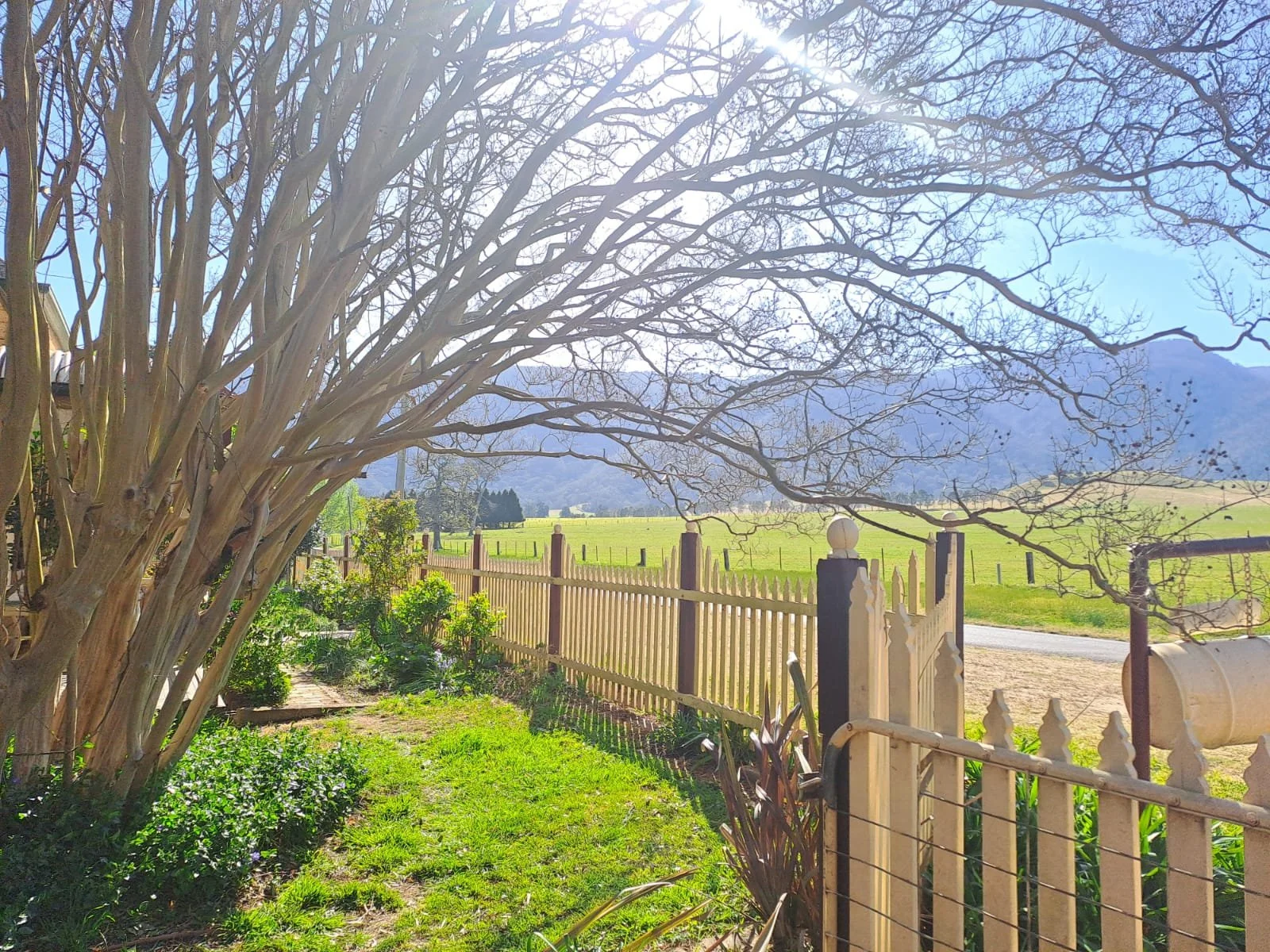Old Post Office 2024
5929 Araluen Road, Araluen
Gates open 10am – 4pm
‘Made in Araluen’ markets Sunday 10am – 2pm at Araluen Federal Hall down the road, with food van and coffee
Sally Matthews was working in the Northern Territory in 2011 when she decided to up sticks and buy a house in Araluen, having fallen under the spell of the valley on previous visits.
The house was the former Araluen post office and telegraph exchange. Built in 1901 and fully renovated by the previous owners, the charming weatherboard came with a pool, 2.2 acres of gardens and postcard mountain views.
That first night after driving from Darwin, she rolled out her swag on the bare timber floorboards and in the morning awoke to a hoar frost, the unique feathery icicles that form on cold and windless nights with low humidity. It was minus 10 degrees!
“Everything was white, just like it had snowed. My dog skidded over the edge of the veranda in the ice and literally bounded back inside to her slightly warmer dog bed.” Sally wondered what on earth she’d done.
That initial shock quickly fell away as she immersed herself in the delights of an established temperate garden and grew accustomed to the rhythm of the seasons.
After experiencing the joys and surprises of spring, Sally’s first major job was to convert the pool into a natural “poolabong”. This process took several challenging months before the ecology of the pool finally settled. The transformation from salty water to a living tannin-rich environment involved emptying the pool, growing suitable plants, releasing native fish, trying not to panic about copious algae, installing a fountain to oxygenate the water, and ignoring mosquito larvae.
Today the poolabong is free of larvae and algae and features lotus, water irises, water lilies, Asian water spinach, overhanging acacia and five types of frogs. It attracts a wide variety of birds, and the sound of the fountain is cooling in summer when the valley temperatures are considerably higher than nearby uplands.
The park-like acreage is filled with ornamentals and edibles, from a stunning 10-metre-high crepe myrtle and gnarled old peppercorn trees, to pomegranate bushes propagated from a tree in a nearby abandoned orchard. Oaks, eucalypts and plane trees throw masses of shade over garden beds filled with iris, smokebush, buddleia, tiger grass and some tropical gems Sally had sent from up north.
“Having lived in the tropics for so long, I’ve got a few reminders of that time, including some tuber roses with white flowers that have the most heavenly perfume. They haven’t flowered since the [2019-20 Black Summer] bushfires but this spring might be the one.”
Araluen’s unique microclimate allows most fruit and nut trees to flourish so there’s a regular harvest of oranges, lemons, apples, pears, plums, mandarins, mulberries, almonds and hazelnuts.
Sally has adopted the Hügelkultur technique in one of her raised vegetable beds. This technique involves filling the bed with rotting branches and other compostable plant material – she likens it to a log lasagne – which provides a nutrient-rich medium to practice the “Three Sisters” Native American Indian approach to growing corn to form supports for beans, and pumpkins to reduce weeds and loss of moisture from the soil.
Sally sees herself as a custodian of the property and recently decided to pass the baton to the next caretaker, reluctantly putting the house and much-loved garden on the market. Despite having spent a large part of her life in the tropics, she’s planning to stay in the district – where the warmth of the local community long ago mellowed memories of that first frosty morning in the valley.







